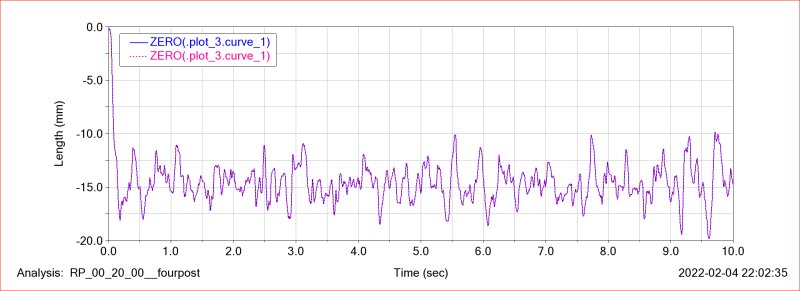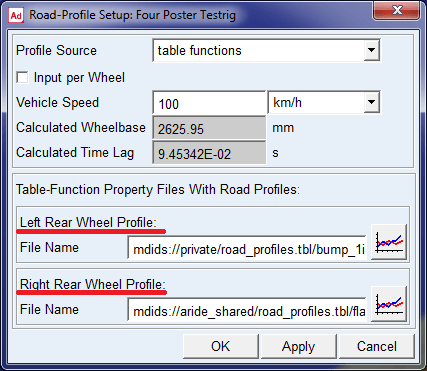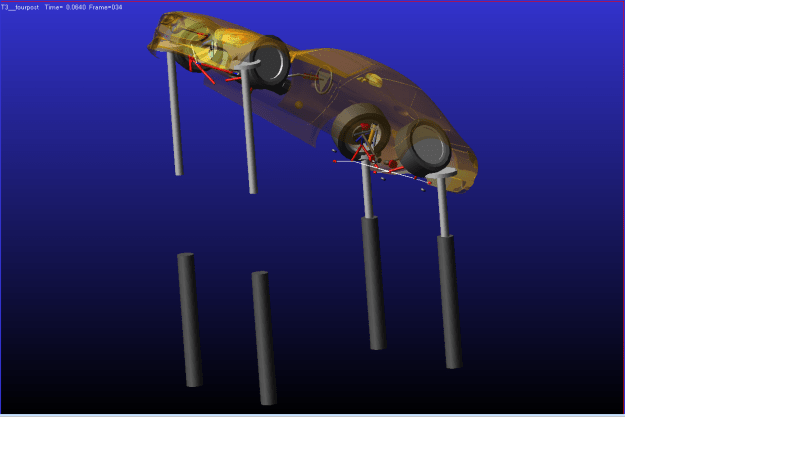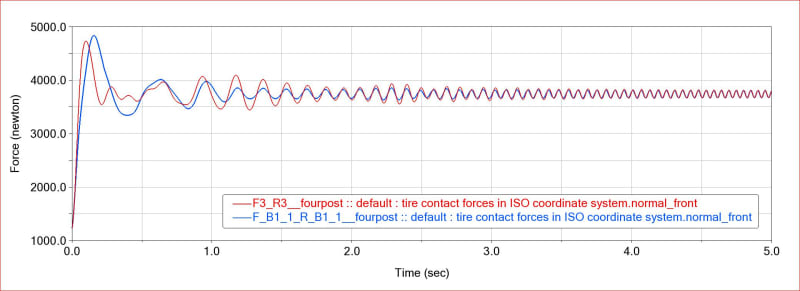Car command line can probably be deduced from this
file:///C:/Program%20Files/MSC.Software/Adams/2021_4_856550/help/master.htm#page/adams_car/compo_analyses.html#ww1180377
The .xml can be used to run the simulations in batch mode. No postprocessor will be started after the simulations, but just the simulations will be executed. An example of a macro (.cmd) running the simulations is given below. This macro executed with the command:
Windows:
<release>\common\mdi.bat acar ru-acar b runtest_batch.cmd
Linux:
<release>/mdi -c acar ru-acar b runtest_batch.cmd exit
With the content of the runtest_batch.cmd (running the tiretestrig_batch.xml):
! example cmd for running tire testrig in batch:
! mdi.bat acar ru-acar b runtest_batch.cmd
!----
!
variable create variable_name=filename string_value="tiretestrig_batch.xml"
!
if condition=(!db_exists(".acar.variables.tireTestrig"))
variable set variable_name=ttmp_pyexe &
int=(eval(run_python_code("from mdi.visedit.common.tiretestrig_editor import *")))
variable set variable_name=ttmp_pyexe &
int=(eval(run_python_code("os.environ[\"MDI_PRODUCT_NAME\"]=\"main\" ")))
variable set variable_name=.acar.variables.tireTestrig &
int=(!eval(run_python_code("w_tire_testrig=TireTestrig_editor()")))
end
!
! for loading the acar databases
!
for var=ttmp_index start=1 end=(eval(cdb_get_number_of_cdbs()))
variable set variable_name=ttmp_name string = (eval(cdb_level2db(ttmp_index)))
variable set variable_name=ttmp_path string = (eval(cdb_alias2path(ttmp_name)))
variable set variable_name=ttmp_pycmd &
string=(eval("w_tire_testrig.addDb ('"//ttmp_name//"','"//ttmp_path//"')"))
variable set variable_name=ttmp_pyexe &
int=(eval(run_python_code(ttmp_pycmd)))
end
!
if condition=(filename != "")
variable set variable_name=ttmp_pyexe &
int=(eval(run_python_code("w_tire_testrig.loadFile ('" // filename // "')")))
variable set variable_name=ttmp_pyexe &
int=(eval(run_python_code("w_tire_testrig.runit_clicked(True)")))
end
!
variable delete variable=(eval(db_filter_name(db_children(.__ACAR,"variable"),"ttmp_*")))
Cheers
Greg Locock
New here? Try reading these, they might help FAQ731-376





